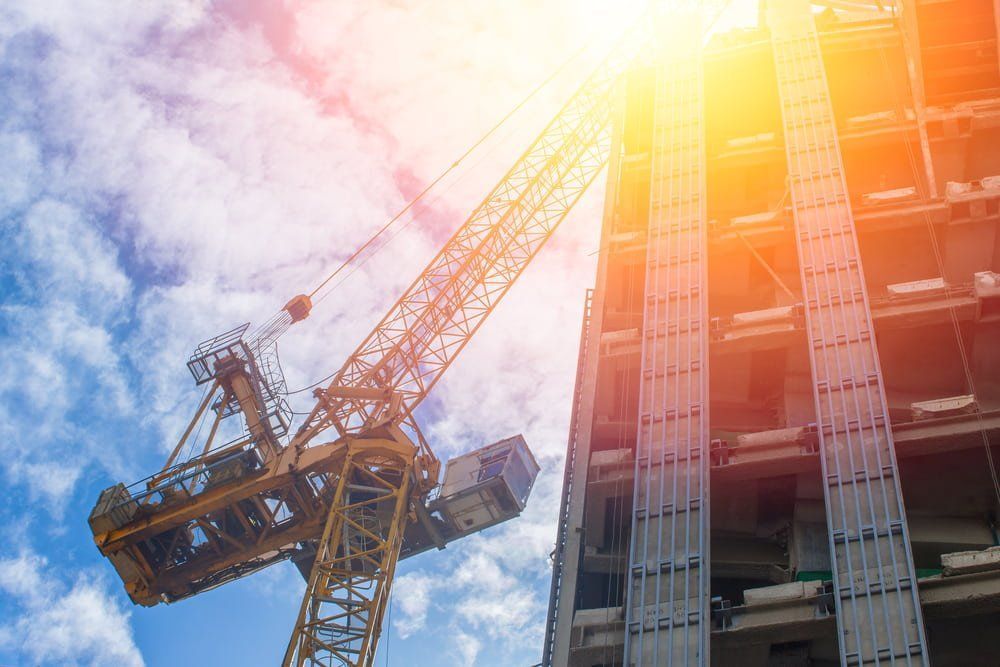The Impact Of Weather On Crane Safety And Inspections
The Impact of Weather on Crane Safety and Inspections

How Weather Affects Crane Safety
Crane safety is deeply influenced by weather conditions. From heavy rain to extreme heat, different weather elements can affect the structural integrity and operational safety of cranes.
Wind
High winds can pose significant risks to crane operations. They can cause cranes to sway, which impacts precision and increases the risk of accidents. Gusts can be particularly dangerous as they are unpredictable and can occur suddenly.
Rain and Thunderstorms
Rain can reduce visibility and make surfaces slippery, increasing the likelihood of slips and falls. Thunderstorms bring the additional risk of lightning strikes, which can be catastrophic if a crane is struck.
Extreme Temperatures
Both extreme heat and cold can affect crane components. Heat can cause materials to expand and potentially fail, while cold can make metals brittle, leading to cracks and other structural issues.
Crane Inspection Checklist for Different Weather Conditions
Ensuring crane safety requires diligent
inspections tailored to specific weather conditions. Here’s a detailed checklist to guide inspections:
- Verify weather forecasts to anticipate and plan for potential weather changes.
- Inspect crane components for any signs of wear or damage that could be exacerbated by weather.
- Ensure all safety devices are functioning correctly.
Pre-Operation Checks
- Verify weather forecasts to anticipate and plan for potential weather changes.
- Inspect crane components for any signs of wear or damage that could be exacerbated by weather.
- Ensure all safety devices are functioning correctly.
During Operation Checks
- Continuously monitor wind speeds and stop operations if winds exceed safe levels.
- Check for water accumulation in control panels and other sensitive areas during rain.
- Schedule operations during cooler parts of the day to avoid extreme heat effects.
During Operation Checks
- After operations, inspect the crane for any weather-related damage.
- Keep a record of weather conditions during operations and any adjustments made.
- Schedule professional maintenance to address wear and tear caused by weather conditions.
Navigating Weather Challenges with Crane Hire
Hiring cranes from a reputable company offers significant benefits, especially when dealing with adverse weather conditions. It ensures your project remains on track, regardless of the weather conditions. Regular maintenance and thorough inspections conducted by the
crane hire company ensure that all equipment is safe and operational.
Additionally, crane hire provides flexibility with short-term and long-term options, allowing you to adapt to your project's specific needs. Professional support and expert advice can help you navigate and mitigate weather-related challenges effectively. By leveraging these advantages, you can maintain productivity and safety on-site, even in challenging weather conditions.
Ensure Crane Safety in All Weather Conditions
By understanding these factors, you can ensure your project proceeds smoothly and safely, no matter what the forecast holds. At
AMAC Cranes, we recognise the challenges that weather can pose to crane operations. Our modern fleet of
all-terrain and
Franna cranes is designed to handle unpredictable weather conditions.
We offer wet and dry hire
options, comprehensive site inspections and
mechanical support to ensure the safety of your project. Additionally, our competitive
mobile crane rates make our services accessible for various projects.
Get in touch with us today for crane hire on the Sunshine Coast!












